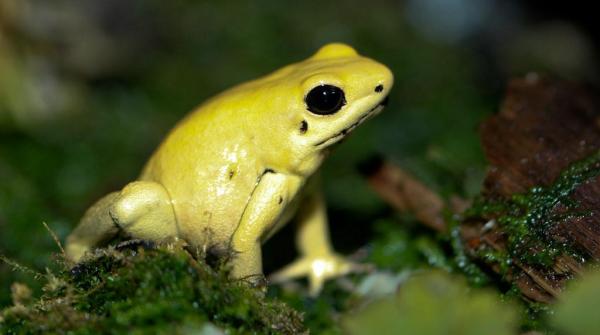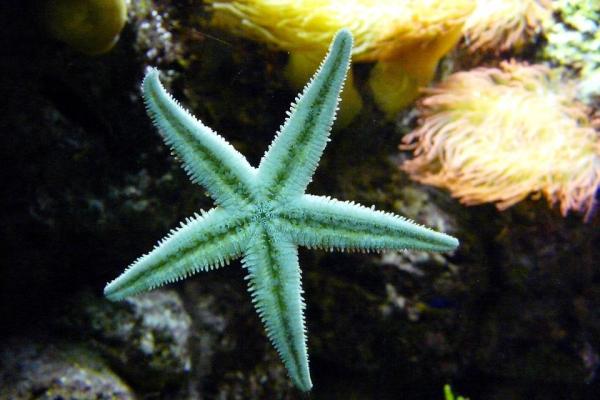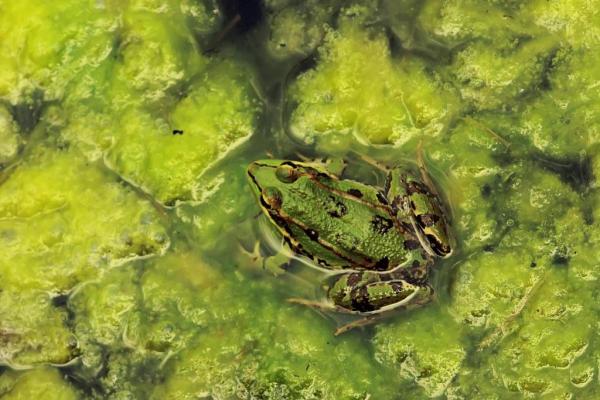
Many animals breathe through the skin, although some of them, due to their size, combine this with other types of breathing. Did you know that some of the animals that breathe through their skin may also modify the shape of their bodies to increase surface/volume ratio? Animals that breathe through the skin also have an extremely thin epidermal tissue or tegument, allowing for gas exchange to occur. Additionally, these animals must be aquatic, closely linked to water or live in extremely humid environments.
If you’re wondering which animals breathe through their skin, this AnimalWised article is for you! In addition, we’ll also be highlighting other breathing mechanisms which exist within the animal kingdom, keep reading for more.
Respiration in animals
There are many different types of breathing mechanisms within the animal kingdom. This type of respiration in animals will depend largely on whether the animal is terrestrial or aquatic, small or large or if it flies or not.
Animals that breathe through gills
One of the main types of breathing in animals is through gills. Gills are structures that can appear inside or outside of an animal’s body. Gills allow an animal the ability to receive oxygen and release carbon dioxide. Some types of aquatic animals with gills include:
- Marine annelids carry tentacles which they use as gills and to feed.
- Starfish have gill papula that act like gills. Additionally, they also have ambulatory feet also act as gills.
- Sea cucumbers have a respiratory tree that empties into the mouth (aquatic lung).
- The Atlantic horseshoe crab has book gills covered by gill plates that the animal moves rhythmically.
- Gastropods have gills that develop from the cavity of their mantle (a special cavity that molluscs have in their bodies).
- Lamellibranchs, a type of bivalve, have laminated gills with projections.
- Cephalopods have laminated gills without cilia.
Other animals that breathe through gills are fish. For more, we recommend reading our article where we discuss, how do fish breathe?
Animals that breathe through spiracles
Tracheal breathing in animals is another important type of breathing that occurs mainly in insects. These animals have structures on their bodies called spiracles through which they breathe in air and distribute it throughout the body. These animals breathe through ‘air holes’.
Animals that breathe through lungs
Another respiratory mechanism in animals is breathing through lungs. This type of breathing is more common in vertebrates, except for fish. Reptiles, for example, have unicameral or multicameral lungs. Smaller animals like snakes will have unicameral lungs while larger animals, like crocodiles, carry multicameral lungs. These animals have a bronchus that runs through the entire lung, known as a bronchi cartilage. Birds have a parabronchial lung, which consists of a set of bronchi placed in a grid with a series of air sacs. And lastly, mammals have lungs that can be divided into lobes.
Keep reading to discover our list of animals that breathe through skin:

Cutaneous respiration in frogs
Cutaneous breathing is an exclusive form of breathing which only occurs in very small animals. Since these animals have few metabolic requirements and are small, their diffusion distance is also small. When these animals grow, they increase their metabolic requirements and their volume and diffusion distance is not sufficient. This therefore results in a need for another type of breathing.
In animals of a somewhat larger size, or that have another mechanism to breathe or acquire an elongated shape, they can continue with this type of breathing. In worms, for example, having an elongated shape increases the surface-volume ratio, allowing them to keep breathing in the same way. Although, this means they must be in humid environments and must have a thin and permeable surface.
Amphibians, for example, take on several varying types of breathing throughout their lives. When an egg hatches, small tadpoles breathe through gills and skin, these gills lose total functionality once the animal becomes an adult. When they are tadpoles, their gills serve to both capture oxygen and release carbon dioxide. Upon reaching adulthood, the function of oxygen uptake is reduced and that of releasing carbon dioxide increases.
Animals that breathe through their skin
To learn a little more about the animals that breathe through the skin, here we have listed animals with permanent cutaneous breathing or that use it as a function at some period of their life:
- Common earthworm (Lumbricus terrestris): all earthworms breathe through their skin throughout their lives.
- European medicinal leech (Hirudo medicinalis): permanently breathe through their skin.
- Hellbender (Cryptobranchus alleganiensis): breathe through their lungs and skin.
- Northern dusky salamander (Desmognathus fuscus): exclusively breathes through cutaneous gas exchange.
- Bosca’s newt (Lissotriton boscai): breathe through lungs and skin.
- Common midwife toad (Alytes obstetricans): like all toads and frogs, they follow branchial breathing when they are tadpoles. Cutaneous respiration is maintained for life, but in the adult stage the release of carbon dioxide becomes more significant.
- Pelobates cultipes (Pelobates cultripes).
- Perez’s frog (Pelophylax perezi).
- Golden poison frog (Phyllobates terribilis).
- Strawberry poison frog (Oophaga pumilio).
- Sea urchin (Paracentrotus lividus): despite having gills, they also breath through the skin.
- Julia Creek dunnart (Sminthopsis douglasi): are mammals that, due to their metabolism and size, cannot breathe through their skin. However, newborn offspring of this marsupial species depend exclusively on skin respiration during their first days of life.
Fun fact: human beings have skin respiration. This human skin breathing, however, only occurs in the corneal tissue of the eyes.

If you want to read similar articles to Animals That Breathe Through Skin, we recommend you visit our Facts about the animal kingdom category.
- Boutilier, R. G., & Toews, D. P. (1981). Respiratory, circulatory and acid-base adjustments to hypercapnia in a strictly aquatic and predominantly skin-breathing urodelle, Cryptobranchus alleganiensis. Respiration physiology, 46(2), 177-192.
- Gatz, R. N., Crawford Jr, E. C., & Piiper, J. (1975). Kinetics of inert gas equilibration in an exclusively skin-breathing salamander, Desmognathus fuscus. Respiration Physiology, 24(1), 15-29.
- Mortola, J. P., Frappell, P. B., & Woolley, P. A. (1999). Breathing through skin in a newborn mammal. Nature, 397(6721), 660.